SIZE OF THE PRIZE
Europe offers a broad range of fashion focused marketplaces, some of which focus on individual countries, while others cover the majority of the EU region. Here’s a selection of some of the strongest:
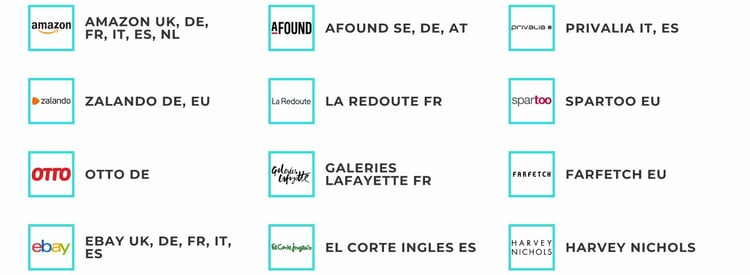
|
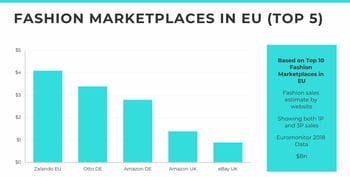 |
The top four fashion marketplaces are Amazon, Zalando, Otto and eBay so we’ve pulled together a few key stats to show what you can expect from each of the sites and give an indication of which might be best suited to your business:
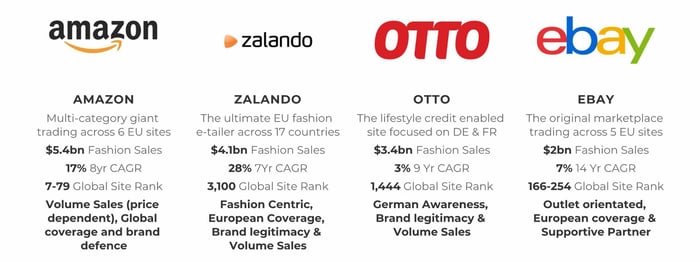
DIFFERENT OPERATING MODELS
Before delving any further into the topic, it’s important to establish what we mean by a marketplace, by comparing it with other ecommerce models:
- Wholesale – forward orders plus in season orders by retailer (John Lewis are known for his model)
- Online concession – Stock managed by brand, warehoused and sold by retailer (Next offer this model)
- Dropship – Individual orders sent from retailer. Retailer seller of record. Brand fulfills. (Very offer this model)
- Marketplace – Order received from Retailer. Brand seller of record & fulfills from own warehouse or 3PL/Marketplace (Amazon sell most of their products through this model)
- Ecommerce – brand sales through brand site
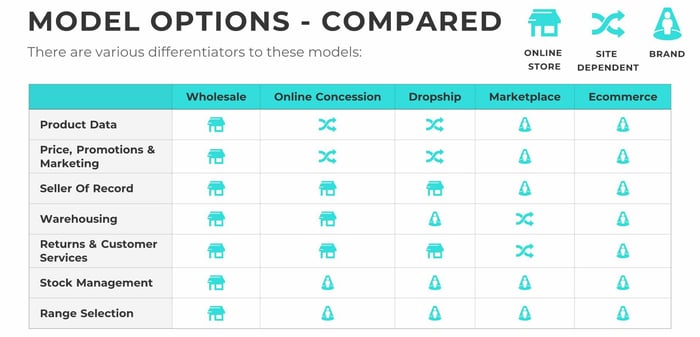
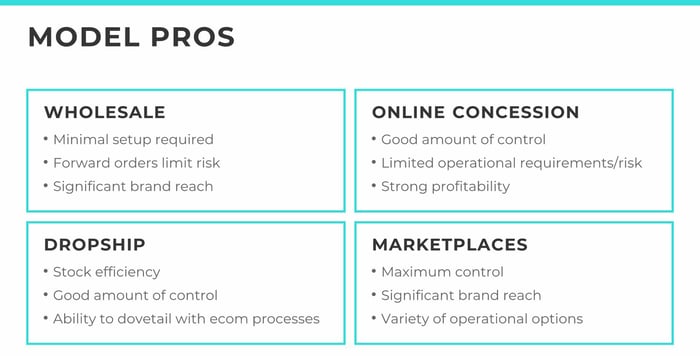
MARKETPLACE OPTIONS
Within the marketplace model there are various different management options available:
- Fully outsourced – partner sells on consignment
- Hybrid – internal brand/product knowledge working with external channel specialist
- Fully in house – all elements of marketplaces managed internally
Integration options can also vary hugely depending on your current data quality and internal systems (listed from manual to fully integrated):
- Manual process & system updates
- Semi automated process using flat files/FTP
- Leveraging existing 3PL/FBA for stock & orders
- Direct integration (multiple integrations and upkeep)
- Working with a channel management system (one time integration)
Additionally, specifically on Amazon there are a number of different operational options (some of which will change from 2021):
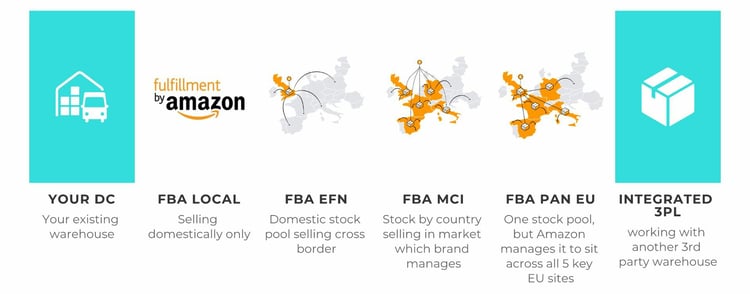
TIPS AND TRICKS FOR STARTING YOUR JOURNEY
Selecting a marketplace:
- Define – objectives, global priorities, scope by marketplace
- Assess – model mixture of scenarios by marketplace to see contribution
- Select – select operating model that suits – fulfillment, tech and resource
- Prioritise – create scorecard and revenue projections by marketplace to help create a roadmap
Planning your proposition – make sure you have a clear vision:
- Research your competitors
- Integrate marketplaces into your marketing plans
- Review search trends where possible
- Speak to marketplace directly where possible
- Think about listing history – continuity products easier to build and grow
- Go for sales data over speculation – test and learn
- Ensure your policies are best practice and viable
- Ensure your pricing is relevant to the marketplace
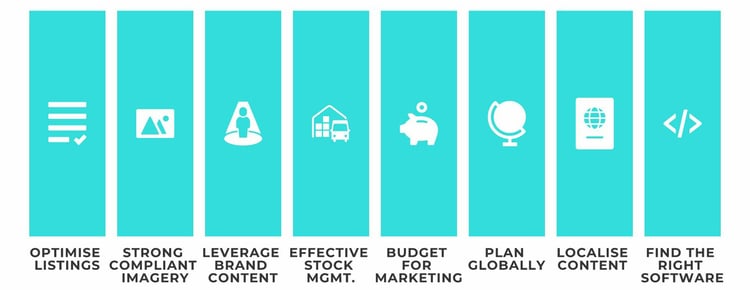
- The global opportunity for marketplaces is significant for fashion
- Review the websites and understand their business models available
- Choose the right operating model for you
- Plan your launch proposition to ensure it is relevant by site
- Look after your brand, listings and account metrics – this is competitive and dynamic
We have years of experience introducing fashion brands to marketplaces and growing their accounts – if you have any questions or want to know how to get started, just get in touch with sales@richinsight.co.uk and we’d be happy to help.






Blog Comments